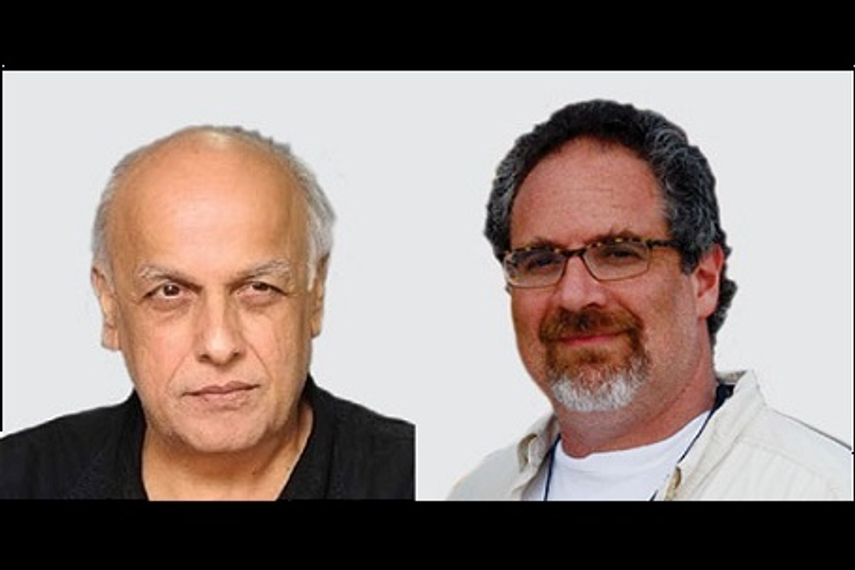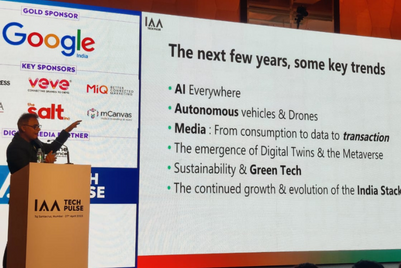
The second edition of IAA Young Turks Forum was hosted in Mumbai on 6 August, featuring film makers Mahesh Bhatt and Stuart Sender. The theme for the session moderated by Neeraj Roy, MD and CEO, Hungama Digital Media Entertainment, was ‘How cinema influences culture and marketing’.
Academy award nominated film maker and producer Sender, president, Balcony Films, pointed to the relationship working both ways - he contended that while movie making influenced culture, culture too influenced movie making, in turn affecting people in 'conscious and unconscious ways'.
He then showcased the trailer of his Hollywood film The Vow.
He said, "This is a popcorn Hollywood date film that was released on Valentine's Day and was based on a true story. However, the truth of the matter was that the injuries the couple sustained in real life were quite severe and the woman was in hospital for a long time. She had to learn to walk and talk again. But all this would not have made a good popcorn movie. So that stuff gets left out. (The media and) We decide what people should see and what they should not. The reasons range from corporate interests or peoples' tastes or with how we present information."
Referring to programming of a different genre, he cited the example of Years of living dangerously, a TV series he produced, which aired recently in the United States. It features eminent personalities highlighting climatic changes taking place globally.
He surmised, "These are couple of ways that we can look at how we tell our stories, whether a love story or (on) compelling issues. The question is how we can put some star power and thinking in terms of how we market media, culture and ideas - to work for some other issues and causes that will make people think and make an impact in meaningful ways."
Bollywood director and producer Bhatt mused that if books and movies could change the world, 'the world would be paradise'. He added, "Having believed that movies do not influence human nature and bring any change, I discovered that some movies that came from my heart did have significant impact on the lives of people; therefore, it had an impact on culture."
He cited the example of Arth, a film made in the 1980's featuring a woman walking out on her philandering husband to find her footing. He said that he made the movie much against the Bollywood belief that audiences would not accept an Indian woman reacting in this manner. However, the film went on to achieve stupendous success and made actor Shabana Azmi a role model for women at that time, he recalled.
Bhatt then revealed that in the beginning of the century, he embraced another form of cinema - 'cinema of gratification'. The reason? If a film did not gratify the audience aged 18 to 35 years, it did not perform well at the box office.
He said, "There are two kinds of movies - ones that jolt the comforted and others that comfort the jolted. In today's age where pleasure is the be-all and end-all, movies that are sombre face the kiss of death. As marketers when we conceive an idea we want to make sure that we will gratify the 18 to 35 audience which will make a purchase on opening day. We would like to believe that we have the freedom to tell the stories we want to, but we are puppets because the super narrative that is controlling the consciousness of man will not allow you to break away. Because unless you endorse, defend and perpetuate the value system of the culture you are born in, you will not get acceptance."
In the context of Christianity, he noted how the narrative ended at resurrection and not crucification. "We all tell stories of resurrection. All marketers essentially sell those emotional and comforting facts because the human race is going through a dark night," he added.
On Bollywood, Bhatt ceded that there had been dumbing down of the content, but reasoned that this was because people preferred such content to hard hitting films on real issues. He substantiated his point with the case of two of his films - Jism 2 and Citylights. The critically acclaimed Citylights did not do well at the box office.
Sender concurred, quipping that it was easier to air programmes on African Safari and wild life, than on problems faced by the people living there.
Roy wrapped up the session underlining the influence of cinema on popular culture, citing one of many instances of its influence on media. Referring to a financial daily's budget coverage a few years ago, he said, "Every headline and image was an inspiration from some film. A write up on tax was based on Bollywood film Lagaan, an article on Nuke treaty featured the spokesperson as Superman and so on. This shows how the component of influence has percolated so greatly."
Also read:


.jpg&h=334&w=500&q=100&v=20250320&c=1)
.jpg&h=334&w=500&q=100&v=20250320&c=1)



.jpg&h=334&w=500&q=100&v=20250320&c=1)
.jpg&h=334&w=500&q=100&v=20250320&c=1)





.jpg&h=268&w=401&q=100&v=20250320&c=1)
.jpg&h=268&w=401&q=100&v=20250320&c=1)
.jpg&h=268&w=401&q=100&v=20250320&c=1)
.jpg&h=268&w=401&q=100&v=20250320&c=1)

.jpg&h=268&w=401&q=100&v=20250320&c=1)
